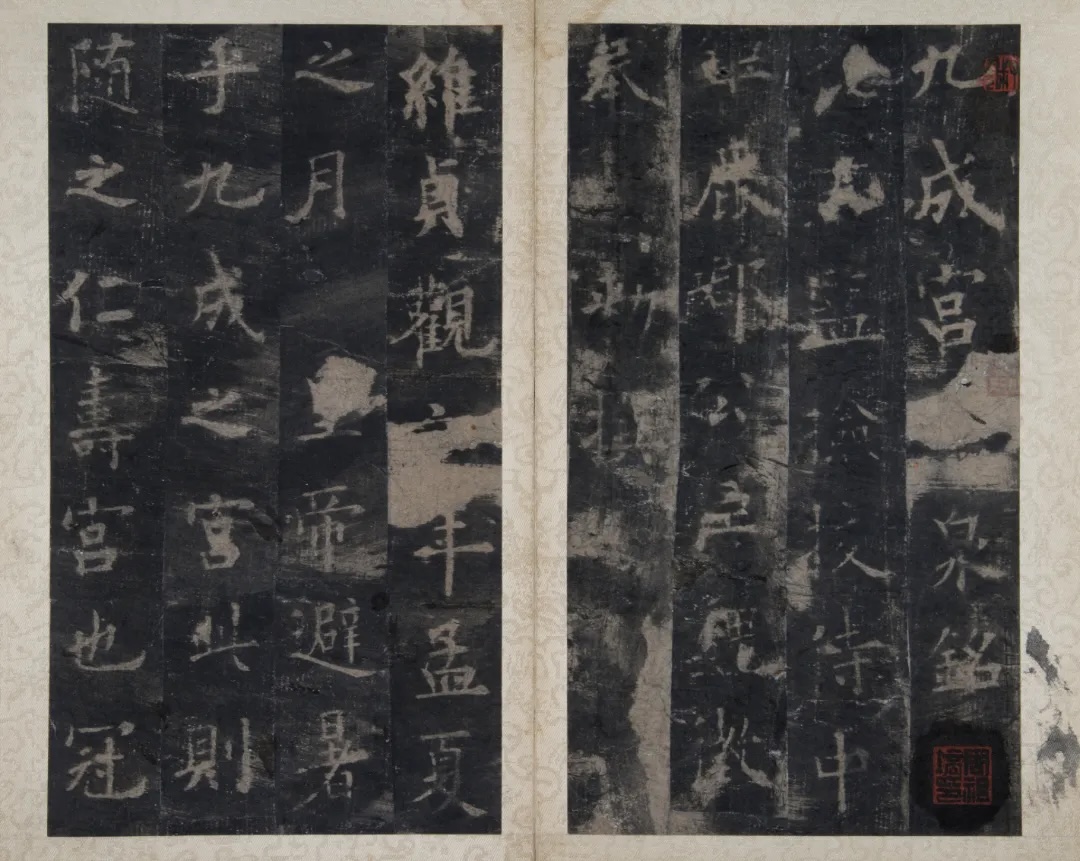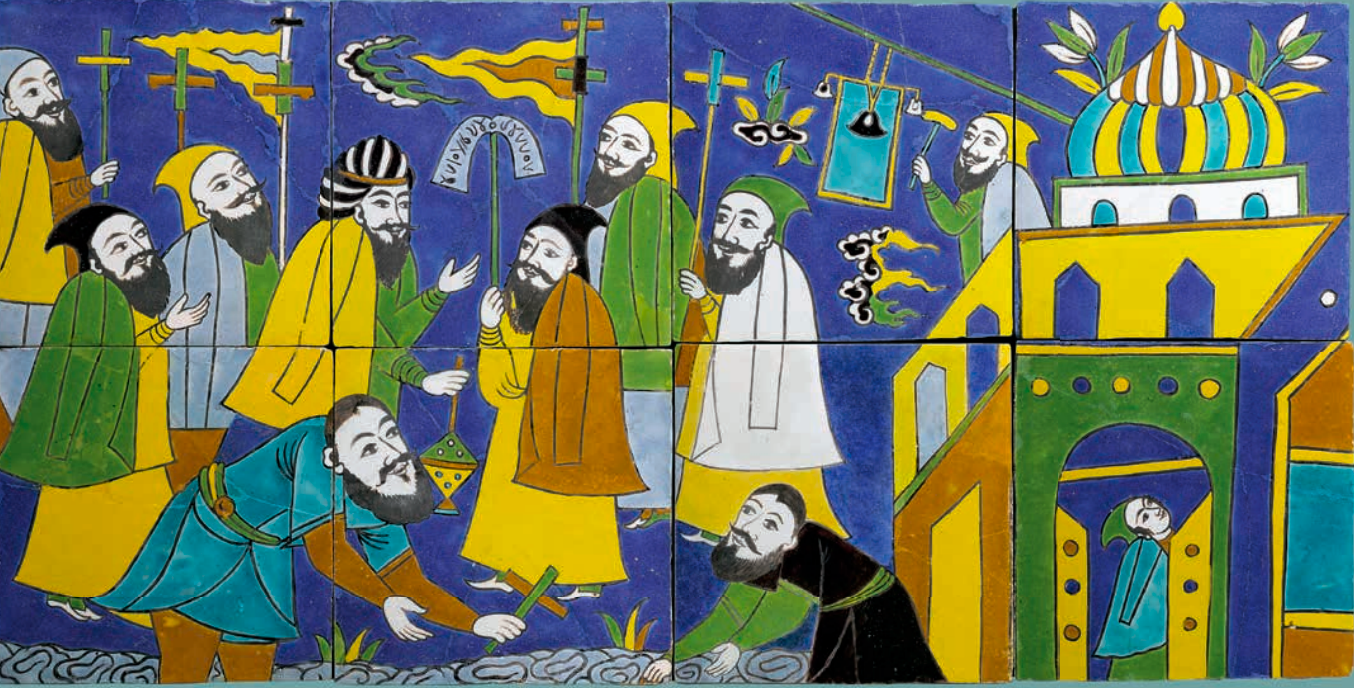
Epigraphy is the precursor to Chinese archaeology and is a discipline focused primarily on the study of ancient bronze vessels and stone inscriptions. It emphasizes cataloging and verifying textual materials to support historical research. Epigraphy emerged during the Northern Song Dynasty, with Ouyang Xiu being its founder. His student, Zeng Gong, introduced the term "epigraphy."
Currently, the seventh phase of the "Epigraphy and Calligraphy" exhibition is being held at the Zhejiang Provincial Museum's Zhi Jiang Pavilion. The exhibition is divided into two parts. The first part features a special display of rare stone rubbings from collections of the Shanghai Museum and the Palace Museum, showcasing 20 types from the Shanghai Museum and 14 types from the Palace Museum. Notably, the Palace Museum’s rubbing of Ouyang Xun's "Inscription on the Liquor Spring of the Nine Successes" from the Northern Song period (the Shengfang Wangshi version) is making its public debut for the first time in nearly a century.

Northern Song rubbing of Ouyang Xun's "Inscription on the Liquor Spring of the Nine Successes" (Shengfang Wangshi version) Collection of the Palace Museum
According to reports, the "Epigraphy and Calligraphy" exhibition series represents an exploration by the Zhejiang Provincial Museum in actively utilizing its collection resources, promoting the reasonable use of cultural relics, and broadening curatorial approaches. Since its inception in 2016, the series has successfully held six sessions, receiving widespread acclaim from both industry experts and the public, and has become a classic brand of academic exhibitions. The seventh phase of the "Epigraphy and Calligraphy" exhibition is currently on display at the Zhi Jiang Pavilion of the Zhejiang Provincial Museum.
Ouyang Xun's "Inscription on the Liquor Spring of the Nine Successes" (Shengfang Wangshi version) makes its first public appearance in nearly a century
The stone rubbings in the collection of the Palace Museum are of extremely high quality. Among them, Ouyang Xun's "Inscription on the Liquor Spring of the Nine Successes" (the Shengfang Wangshi version) and the rubbing of Wang Xizhi's "Sacred Teachings for the Li" from the Northern Song period are both classified as national first-class cultural relics. The prestigious Shengfang Wangshi version of "Inscription on the Liquor Spring" has not been seen in public for almost a century.
While many Southern Song rubbings of "Inscription on the Liquor Spring" exist, Northern Song rubbings are exceedingly rare. The earliest known version is held in the Palace Museum and previously belonged to the Ming prince Li Qi, classified by Ma Ziyun as a Northern Song early rubbing. Notable later examples include a Ming Dynasty collection from the Palace Museum, an old copy from the National Library of China, and the Shengfang Wangshi version now on exhibit.

Northern Song rubbing of Ouyang Xun's "Inscription on the Liquor Spring of the Nine Successes" (Shengfang Wangshi version) Collection of the Palace Museum
Before the appearance of the Li Qi version, the Shengfang Wangshi version held a prominent status, widely regarded as the foremost copy in the north during the Tongguang period. This version is butterfly-bound, featuring four lines per page with seven characters in each line. The three characters "clouds and mist" have eroded, while the character "heavy" in the phrase "re-translate to Wang" remains intact. It has colophons from well-known figures such as Weng Fanggang, Wang Shu, Prince Cheng, Shao Yuqing, Chen Changqi, Zhou Zoupe, Zhou Shouchang, and Chen Baochen, along with poetry by Wang Fuzeng. In his book "Identification of Stone Rubbings," Ma Ziyun ranks this version alongside the Ming palace-bound copy of Zhu Wenjun, considering it second only to the Li Qi version. In 1956, Zhang Yansheng referred to this version as an important reference point in dating the Li Qi version: "In my experience with over twenty copies of "Inscription on the Liquor Spring," the Shengfang Wangshi version and the copy formerly belonging to the Zhou family, later passing through the Mao family and back to the Wang family, is the finest, while the one from the Xiaoshan Zhu family is the second best.
The journey of the Shengfang Wangshi version is quite legendary. During the Qianlong and Jiaqing periods, it was collected by notable figures such as Song Bangsui, Shao Yuqing, and Qi Shan. After the initial dispersal from Qi Shan's home, it came into the possession of Zhou Zoupe, who documented the provenance of the rubbing in his colophon:
In the past, I saw this rubbing at the residence of Qijingly, and I was amazed to find it a treasure, yearning for it in my heart for over twenty years, unable to rid myself of longing. Later, my son Wenyu, served in the same office as the heir of Qijingly, and inquired about this rubbing. I thus learned that the entire original had been lost, and only two copies remained. I was fortunate enough to receive a gift, like a feather from a lucky bird, and though it was rare, I regretted still not possessing the complete version. This autumn of the Bingyin year, Yangquan entrusted my nephew Hu Tie'an to contact me about a wet ink rubbing of "Inscription on the Liquor Spring" that I have fortunately located. He wishes to sell it to me for a hundred gold coins, evidently knowing of my deep appreciation for it. Upon obtaining it, I lit incense and quietly reflected on it, as though meeting with an old friend, realizing that my spirit was engaged, I ultimately reached fulfillment, though the mystical connection of divine artifacts in the world might remain a mystery to comprehend.

Northern Song rubbing of Ouyang Xun's "Inscription on the Liquor Spring of the Nine Successes" (Shengfang Wangshi version) Collection of the Palace Museum
When it was acquired by Zhou Zoupe, two copies were still missing. In the early Guangxu years, it passed to Mao Changxi (posthumously honored as Wenda), who unintentionally managed to purchase the two missing copies from the marketplace, thus completing the set. The serendipitous collection and reunion are truly remarkable. It later belonged to Xu Fu and returned to Wang Fuzeng in the 32nd year of Guangxu (1906), henceforth known as the "Shengfang Wangshi version." This volume also bears the seal of "Taoshan Jingyan," with the last known private collector potentially being the Jiaxing resident Tao Changshan (Tao Shan as a courtesy name). In 1959, it was acquired by the Palace Museum.
The Shengfang Wangshi version was produced using a wet ink rubbing technique, which Ma Ziyun referred to as "water ink rubbing." The rubbing technique appears rather hasty; however, the prolonged appreciation reveals exceptional charm. Wang Shu noted in his colophon: "Though the felt and wax are coarse and thus may seem like light clouds obscuring the sun, upon calm examination, one perceives that the essence and intention are precisely fulfilled, and the flavor only deepens. Hence, it is realized that the spirit of the ancients is not manifested through mere visibility." After it came into the possession of Wang Fuzeng, this version remained hidden from public view, and only a few private but yellowed and faded photographs from the late Qing period circulated. Due to the passage of time, these copies have become significantly unclear, and since then, no complete published versions have appeared.

Northern Song rubbing of Ouyang Xun's "Inscription on the Liquor Spring of the Nine Successes" (Shengfang Wangshi version) Collection of the Palace Museum
Additionally, the Ming Dynasty rubbings of famous inscriptions from the Han and Wei dynasties form the backbone of the exhibition. The collection at the Palace Museum includes over a dozen types of Ming rubbings, such as the Ming mid-period rubbing of Zhou's "Stele of the Stone Drum" (formerly owned by Wu Yun), the Ming rubbing of Wei's "Transfer of Power Document" (with a colophon by Wang Shu), the Ming rubbing of Northern Wei's "Zhang Menglong Stele" (retaining the character for "We" and accompanied by endorsements from Yang Bin), and the Ming rubbing of Tang's "Wang Guy's Brick Tower Inscription" (previously owned by Chen Jiaqing and Zhu Yian), among others. These inscriptions not only rank high in terms of their historical significance but also possess notable endorsements from master connoisseurs, marking them as classic works that have been well-preserved.
Two of the earliest rubbings of Northern Wei's "Record of the Statue of Lord Shiping" are also on display
In the sixth phase of the "Epigraphy and Calligraphy" series—the special exhibition of the Shanghai Museum's rubbings—numerous stunning items from the collection of Qiu Shuyu were showcased. The Shanghai Museum's library collection of rubbings features a significant number from Qiu Shuyu's collection, along with other sources including Xu Senyu and Sun Boyuan. This exhibition includes early Qing rubbings of the "Stele of Hengfang" (previously owned by Huang Yi), the first rubbing of Northern Wei's "Record of the Statue of Lord Shiping" (the Wang family’s Huayu Building edition), and the past collections from Zhao Liewen of Tianfang Building. The exhibition also features the Ming rubbing of Tang's "Sacred Teachings at the Wild Goose Pagoda," allowing viewers a feast for the eyes.
The Longmen Grottoes in Luoyang, Henan, house over three thousand inscriptions and among them, the most renowned include the Northern Wei examples of "Yang Dayan," "Lord Shiping," "Sun Qiusheng," and "Wei Lingcang," collectively known as the "Four Treasures of Longmen." "Record of Lord Shiping" is acclaimed for its vigorous handwriting, tightly knit structure, and moments of acoustic beauty, and is traditionally regarded as the pinnacle of calligraphy among the Longmen inscriptions.
Rubbings of "Record of Lord Shiping" are mostly found on black paper, with speckles remaining on the surface. During the Jiaqing and Daoguang years, the bottom was removed, leaving blanks within the characters, leading to a significant loss of essence, hence later generations especially prized the untouched originals. Examples from the Zhejiang Provincial Museum, including the intact full version previously owned by Yu Shaosong and the old collection of Hu Zhen, belong to this category of early rubbings.

The intact unsmudged version formerly owned by Yu Shaosong Collection of the Zhejiang Provincial Museum
In 2019, renowned epigraphy expert and research librarian Mr. Zhong Wei from the Shanghai Library first publicized an edition of a light ink rubbing on full paper previously owned by Xu Naichang. Its first character, "Zhi," remains intact, implying it predates the aforementioned versions. Subsequently, early rubbings showing the intact "Zhi" character were discovered: one being Qiu Shuyu's version from the Shanghai Museum (previously exhibited in the sixth phase of "Epigraphy and Calligraphy"), and another from private ownership by Shen Shuyong, which deepens the potential for further research into the dating of this inscription.

The version once owned by Xu Naichang Collection of Mu Songtang

The version previously owned by Qiu Shuyu Collection of the Shanghai Museum


